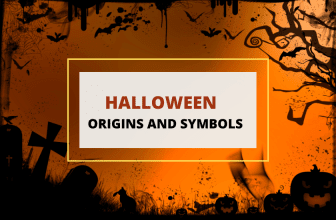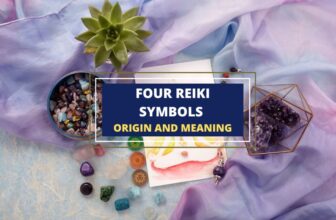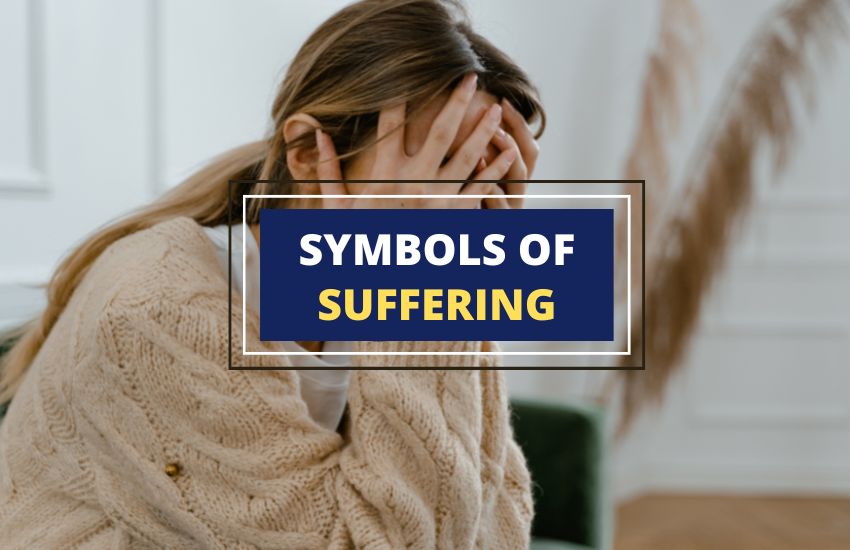
Table of Contents
Suffering can be physical or emotional, individual or collective, and often carries with it a sense of deep pain and despair. In the face of such suffering, people have used symbols to express their pain, mourn their losses, and find hope for the future.
From the cross to the lotus flower, symbols of suffering have played an important role in human history and continue to hold deep meaning for many today. In this article, we’ll explore 15 symbols of suffering from various cultures and time periods and delve into the rich meanings they hold.
1. Cross

The cross is often associated with suffering, as it’s the instrument of torture and death that was used to execute Jesus, the Messiah of Christianity. It represents the pain and anguish that Jesus suffered on the cross for the sins of humanity.
For Christians, the cross represents the ultimate act of love and selflessness as Jesus willingly took on the punishment for the sins of humanity, sacrificing himself so humanity could be saved.
His suffering on the cross was an act of love and compassion, demonstrating the depths of his devotion to humanity.
The cross also serves as a reminder of the importance of suffering in the Christian faith. Christians believe that suffering is a necessary part of life and that it can lead to spiritual growth and enlightenment.
2. Star of David
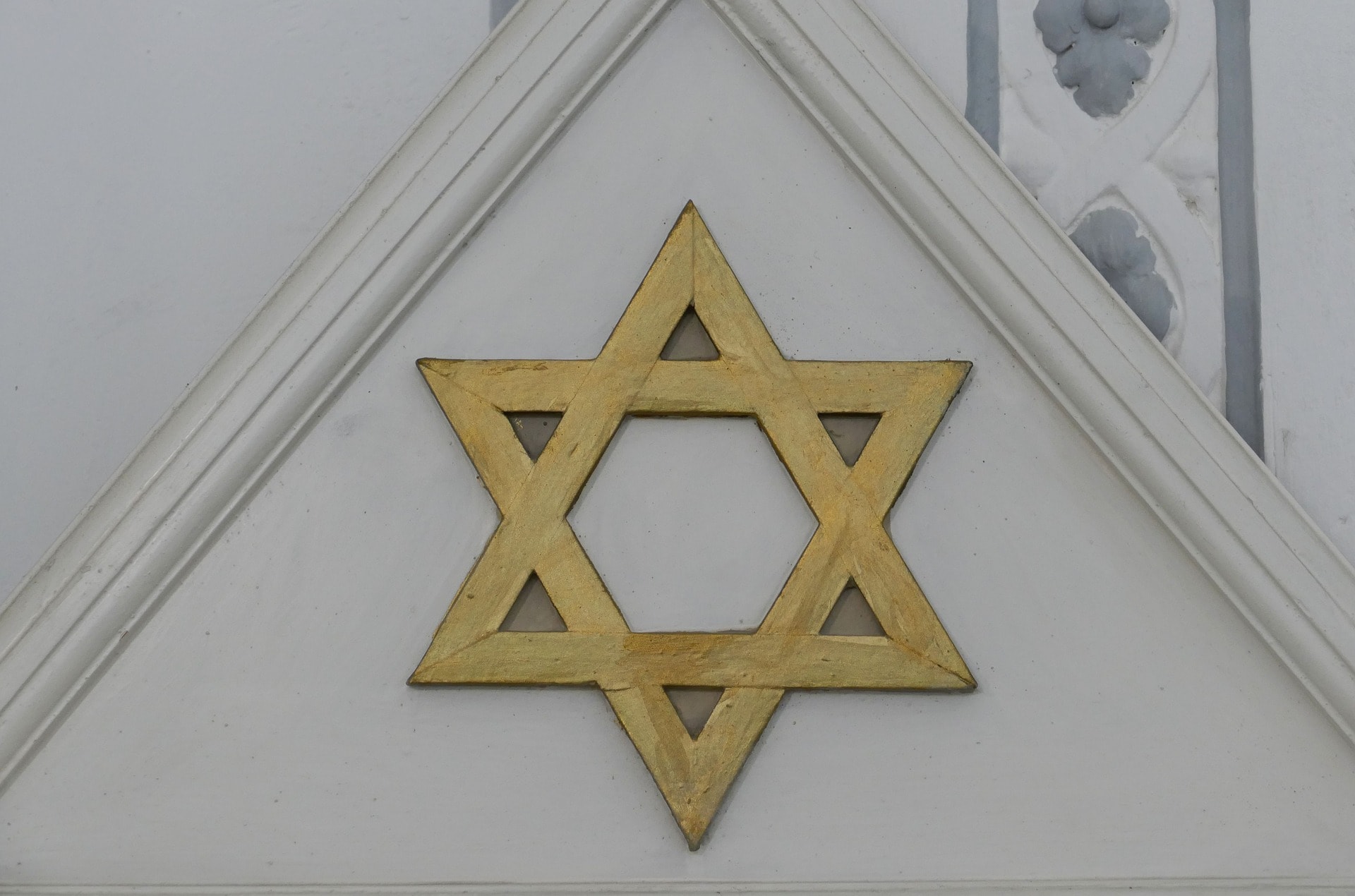
The Star of David, also known as the Shield of David, is a six-pointed star that’s a prominent symbol in Jewish culture and tradition. While it’s not typically associated with suffering, the Star of David has taken on a new meaning in recent history.
During the Holocaust, Jews were forced to wear a yellow Star of David on their clothing as a means of identifying themselves as Jewish. This was a symbol of their oppression and suffering under Nazi persecution, and it has become a powerful symbol of the Jewish people’s resilience in the face of adversity.
Today, the Star of David continues to be a symbol of Jewish identity and solidarity. It serves as a reminder of the horrors of the Holocaust and the ongoing struggle against anti-Semitism.
The star also represents the strength and perseverance of the Jewish people in the face of suffering and persecution.
3. Broken Chain
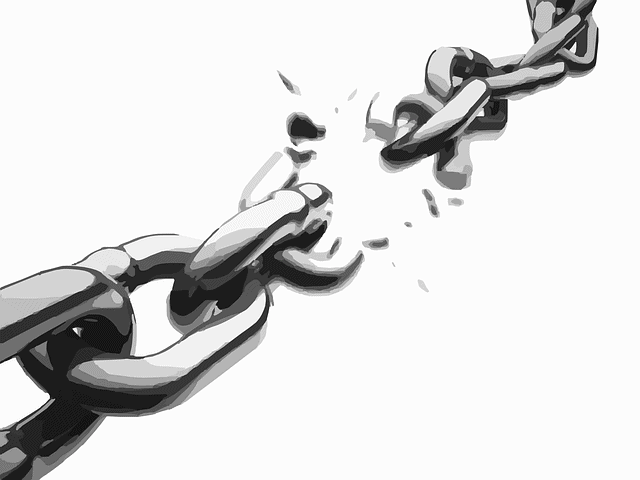
The broken chain is a symbol of suffering that represents the brokenness and disconnection that can occur because of oppression and injustice. It’s often used to represent the experience of slavery, both historical and modern-day.
The broken chain symbolizes the ways in which oppression and injustice can sever the bonds of family, community, and culture.
The symbol is also a reminder of the pain and trauma that can be inflicted on individuals and communities when their freedom and dignity are stripped away. This symbol also represents the struggle for liberation and justice.
It’s a call to action, urging us to work towards a world where all people are free and able to live with dignity and respect. It’s a symbol of hope, reminding us that even in the face of suffering and adversity, we can work towards a better future.
4. Black Ribbon
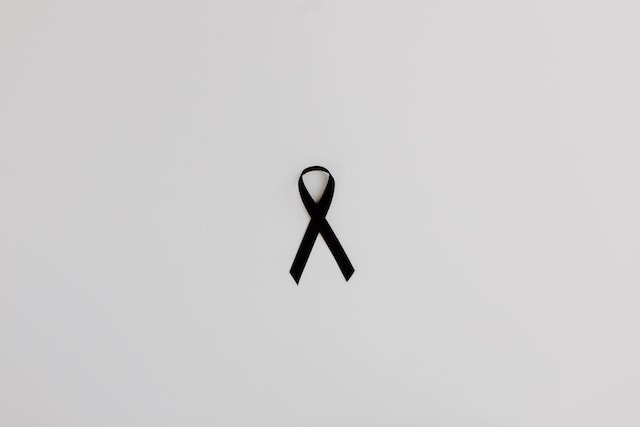
The black ribbon has long been used as a symbol of suffering and mourning. It’s a simple yet powerful representation of grief and loss, particularly in times of tragedy or remembrance.
Whether worn on clothing, tied around trees or affixed to a vehicle, the black ribbon communicates a message of sympathy and solidarity with those who are experiencing pain and sadness. It can also serve as a reminder of the importance of coming together as a community to support one another during times of hardship.
The history of the black ribbon as a symbol of suffering dates back centuries, with its use becoming more prominent during times of war, political unrest, and natural disasters. Today, it remains a widely recognized and respected symbol of compassion and empathy for those who have experienced loss or trauma.
5. White Poppies
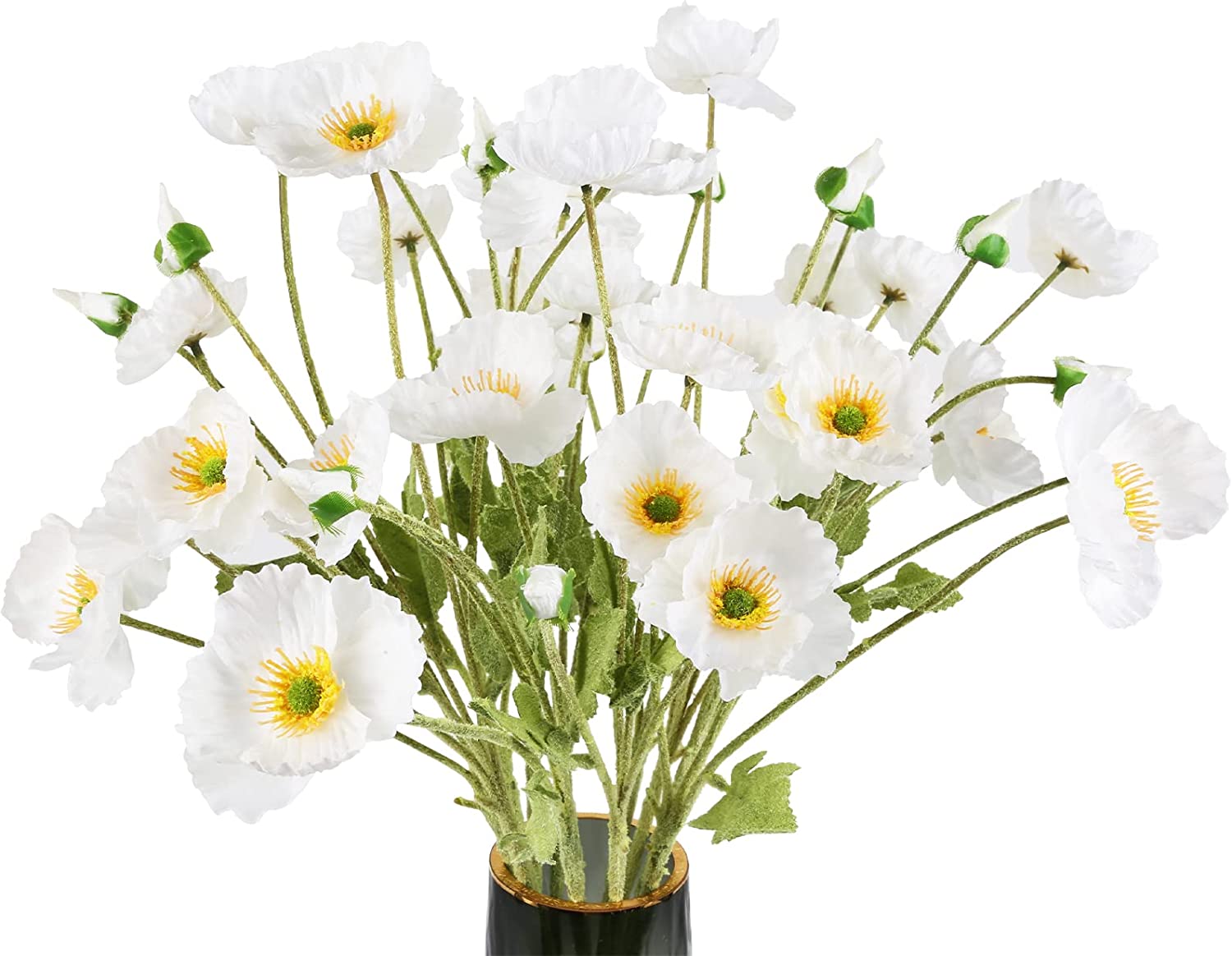
Unlike the traditional red poppy, which represents the remembrance of soldiers who died in the war, white poppies serve as a reminder of the ongoing suffering caused by war and the need for peace.
The white poppy is often worn as a symbol of protest against war and violence, and as a call for reconciliation and peaceful resolution of conflicts. It’s also worn to honor those who have suffered as a result of war, including civilians and non-combatants.
The white poppy has sparked controversy, with some arguing that it undermines the sacrifices of those who died in the war, while others see it as a powerful symbol of the need for peace and an end to human suffering. Regardless of one’s views, the white poppy has become a significant symbol of remembrance and protest in modern times.
6. Yellow Star

The yellow star is a symbol of the Holocaust when Jews in Nazi-occupied Europe were forced to wear yellow stars on their clothing to signify their identity and status as targets of discrimination and violence.
The yellow star represented not only the persecution of Jews but also the dehumanization and marginalization of an entire group of people. It is a stark reminder of the brutal conditions under which they lived and the constant fear and danger they faced.
Today, the yellow star continues to serve as a powerful symbol of the atrocities committed during the Holocaust and the ongoing struggle against prejudice and discrimination.
The star reminds us of the importance of standing up for the rights and dignity of all people, and the need to remain vigilant against the forces of hate and intolerance.
7. Red Ribbon

The red ribbon has become a symbol of suffering and solidarity in the fight against HIV/AIDS. First introduced in the 1990s, the red ribbon quickly became a widely recognized symbol of awareness and support for those living with the disease.
The red ribbon represents the struggles and challenges faced by individuals living with HIV/AIDS, as well as their friends, families, and communities. It also serves as a call to action, urging people to come together to fight against the stigma, discrimination, and inequality that have too often accompanied the disease.
It reminds us of the ongoing need for education, prevention, and treatment, and the importance of supporting those affected by HIV/AIDS with compassion and understanding.
8. Purple Ribbon

Aside from being used as a symbol of suffering, the purple ribbon has also been associated with Alzheimer’s disease, domestic violence, pancreatic cancer, and epilepsy, among other causes.
For example, the purple ribbon is often used to raise awareness about Alzheimer’s disease, which affects millions of people worldwide.
It’s a symbol of the challenges and difficulties faced by individuals living with Alzheimer’s, as well as their caregivers and loved ones. It serves as a reminder of the need for greater research, education, and support for those affected by the disease.
Similarly, the purple ribbon is also used to raise awareness about domestic violence, a serious problem affecting millions of people around the world. It represents the suffering and trauma experienced by survivors of domestic violence, as well as the ongoing efforts to prevent and address this issue.
9. Phoenix

The phoenix is a mythical bird from ancient Greek and Egyptian mythology commonly associated with rebirth, renewal, and transformation.
While it’s not necessarily a symbol of suffering itself, it’s often used in contexts where suffering and adversity are overcome through renewal and transformation.
According to legend, the Phoenix would live for hundreds of years before dying in a burst of flames, only to be reborn from its ashes. This cycle of death and rebirth was seen as a powerful symbol of the cyclical nature of life and the potential for renewal and transformation.
The Phoenix is often used in literature, art, and popular culture as a symbol of overcoming hardship and adversity. It represents the ability to rise above suffering and emerge stronger and more resilient than before.
Whether in myth or in life, the Phoenix is a symbol of hope and inspiration for those facing difficult times.
10. Lotus Flower

The lotus flower is a powerful symbol of suffering and spiritual growth in many cultures and religions. In Buddhist and Hindu traditions, it’s often associated with suffering, particularly the suffering that comes from growing and developing through difficult experiences.
The lotus flower grows in muddy water but emerges from the mud and blooms into a beautiful and pure flower.
This process is seen as a metaphor for the human journey, with the mud representing the challenges and difficulties of life and the lotus flower representing the beauty and wisdom that can emerge from them.
In addition to its symbolic value, the lotus flower is also revered for its beauty and grace. It’s often used in art and literature as a symbol of purity, enlightenment, and spiritual growth.
Overall, the lotus flower is a powerful symbol of the transformative power of suffering and the potential for growth and renewal that can emerge from difficult experiences.
11. Weeping Willow

The weeping willow tree is often regarded as a symbol of suffering because of its drooping branches and long, flowing leaves that are a visual representation of tears. The tree is often planted in cemeteries and other places associated with loss and mourning.
In literature and art, the weeping willow is commonly used as a symbol of melancholy and sorrow. It’s frequently depicted in scenes of grief and loss, such as funeral processions and gravesites.
But this tree is also revered for its beauty and resilience. It’s a hardy tree that can survive in a variety of environments, and its long, sweeping branches can create a sense of peacefulness and tranquility.
The tree reminds us that even in our darkest moments, there’s still beauty and resilience to be found and that with time and patience, healing and growth are possible.
12. Wounded Warrior
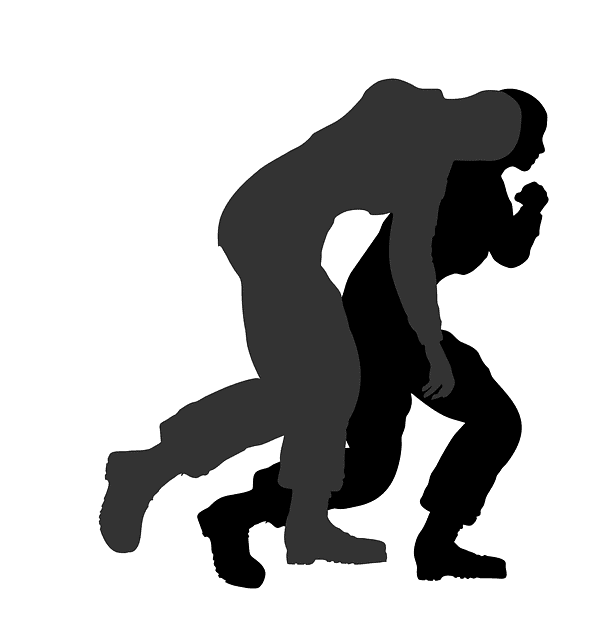
The wounded warrior is a powerful symbol of suffering that represents the physical and emotional scars of those who have served in the military and experienced combat.
The image of the wounded warrior can be found in many cultures and is often used to highlight the sacrifices and struggles of those who have served their country.
This is a symbol of strength and resilience, as those who have experienced the trauma of war often face significant physical and emotional challenges. They may struggle with physical injuries, PTSD, and other mental health issues that can have long-lasting effects on their lives.
Despite the challenges they face, wounded warriors are often celebrated for their courage and bravery in the face of adversity. They’re a testament to the human spirit and the resilience of the human body and mind.
Overall, the wounded warrior is a symbol of the sacrifices and struggles of those who have served their country and a reminder of the ongoing need for support and care for those who have experienced the trauma of war.
13. Empty Chair

The empty chair is a symbol of sadness and longing, as it represents the absence of someone or something that was once present in our lives. It’s often used in funerals, memorials, and other events to symbolize the loss of a loved one or a community member.
Despite its association with sorrow, the empty chair can also be a symbol of hope and resilience.
It reminds us that even in the face of loss and grief, we can find strength and support in our communities and in the memories of those who are no longer with us.
The empty chair remains a powerful symbol of the human experience of suffering and loss. It reminds us of the importance of cherishing the moments we have with our loved ones and of the need for compassion and support in times of grief.
14. Ankh

The Ankh, also known as the Key of Life, is an ancient Egyptian symbol that represents life, death, and resurrection.
In ancient Egyptian mythology, the Ankh was believed to be a powerful talisman that could protect the wearer from harm and grant them eternal life. It was also associated with the goddess Isis, who was revered as the mother of all life and a symbol of femininity and nurturing.
While the Ankh may not be directly associated with suffering, its symbolism of life and rebirth can offer comfort to those who are experiencing difficult times. It reminds us that life is a journey and that even in the face of adversity, there is always the possibility of renewal and transformation.
15. Crown of Thorns
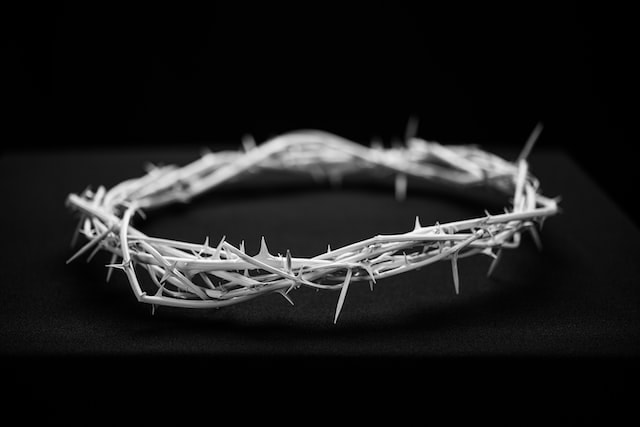
Another Christian symbol of suffering, the crown of thorns represents the physical and emotional pain that Jesus Christ endured during his crucifixion.
According to the Bible, Jesus was mocked and beaten by Roman soldiers, who placed a crown of thorns on his head and forced him to carry the cross to the place of his execution.
The crown of thorns has since become an important symbol in Christianity, representing the immense suffering and sacrifice that Jesus endured for the forgiveness of humanity’s sins.
The crown of thorns is a symbol of the physical and emotional pain that can be endured by those who are persecuted or marginalized. It’s a reminder of the need for compassion and empathy for those who are suffering, and of the power of sacrifice and selflessness in the face of adversity.
Wrapping Up
Throughout history, people have used symbols to express and communicate the pain, grief, and hardships that they face. The 15 symbols of suffering we have discussed in this article represent unique facets of the human experience of suffering, reminding us of the importance of empathy, compassion, and resilience in the face of adversity.
While difficult to confront, these symbols also remind us of the beauty and strength that can emerge from moments of pain and hardship. Ultimately, they represent the profound interconnectedness of the human experience and the power of supporting one another through times of hardship.
Similar Articles:
Top 8 Powerful Symbols of Forgiveness and What They Mean






